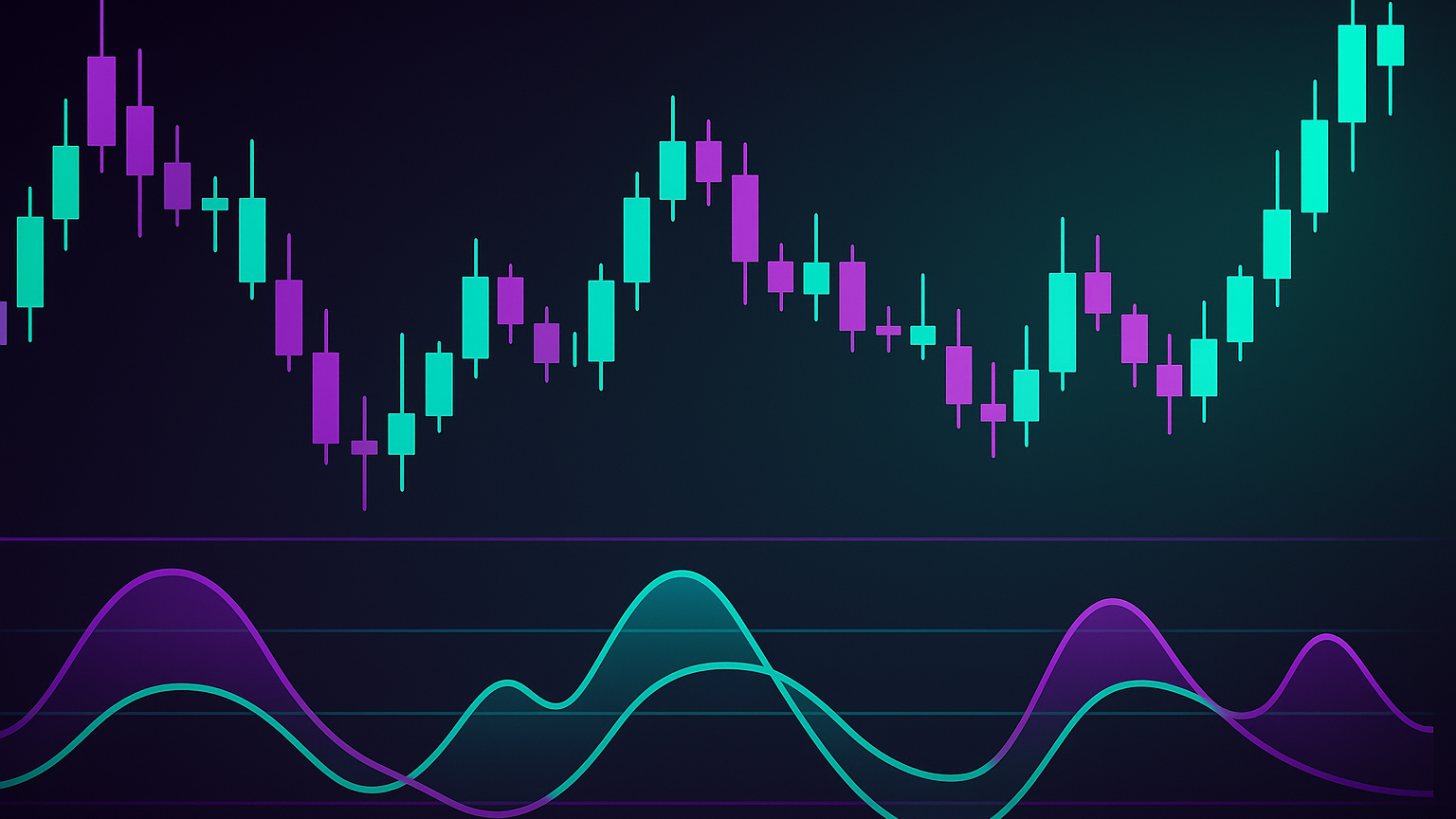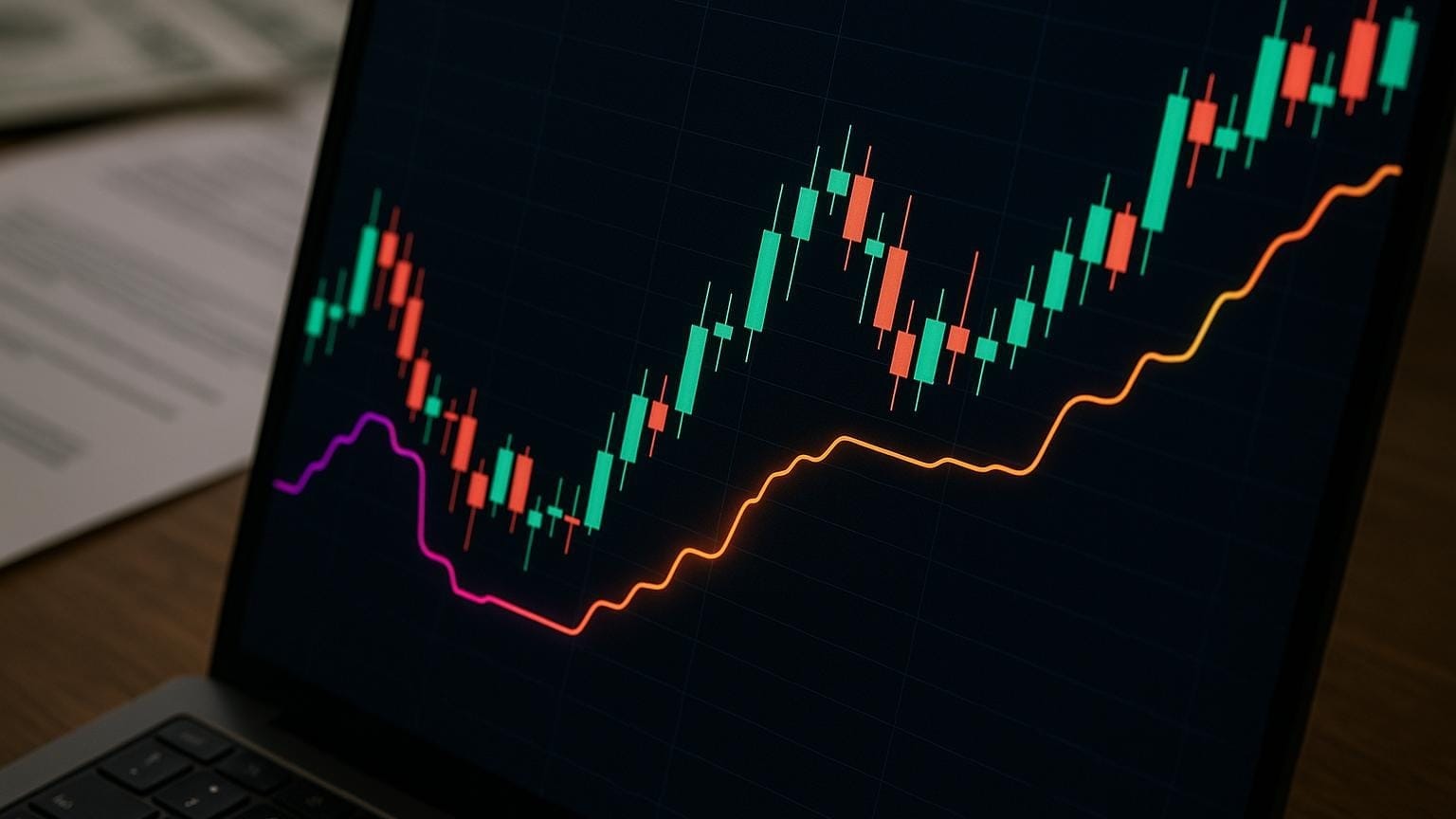Learn how to effectively identify and trade the hammer candlestick pattern for potential market reversals after downtrends.
The hammer candlestick pattern signals a potential market reversal, often appearing after a downtrend. It’s a valuable indicator for traders when analyzed systematically. Here's what you need to know:

-
Key Features of a Hammer Pattern:
- Small real body near the top of the candlestick.
- Long lower shadow (at least 2× the body size).
- Little to no upper shadow.
-
Checklist for Trading Hammer Patterns:
- Verify the Pattern: Confirm the hammer’s shape and ensure it forms after a downtrend.
- Analyze the Trend: Look for formation near support levels, trendlines, or Fibonacci retracement zones.
- Check Indicators: Use RSI (<30), MACD (bullish signal), and moving averages for confirmation.
- Review Volume: Ensure higher-than-average volume during the pattern and the next candle.
- Set Trade Rules:
- Enter after a bullish candle closes above the hammer’s high.
- Place stop-loss below the hammer’s shadow.
- Aim for a risk-reward ratio of 1:2 or higher.
-
Common Mistakes to Avoid:
- Misidentifying patterns like the hanging man or inverted hammer.
- Ignoring Volumetric Toolkit indicators or broader market context.
- Skipping key validation steps, leading to premature trades.
Quick Tip: Always combine the hammer pattern with other technical confirmations, such as volume and oscillator signals, for better accuracy. Stick to disciplined risk management to improve long-term trading success.
How to use Hammer Candlestick Pattern? Price Action Trading Strategy by Vibhor Varshney
Pattern Requirements
For a hammer pattern to be considered valid, it needs to meet certain criteria that point to a strong likelihood of a price reversal.
Shape Components
The shape of the hammer pattern plays a big role in its reliability:
- The real body should be small, while the lower shadow must extend at least twice the length of the body. In bullish hammers, this shadow can stretch three to five times the body's size, signaling stronger buyer momentum.
- A minimal or absent upper shadow suggests buyers held control all the way through the close.
- Although a green (bullish) body reflects slightly more positive sentiment, both green and red hammers are considered valid reversal signals.
Price Trend Position
Where the hammer pattern forms within the price trend is crucial for its effectiveness:
- It must appear after a downtrend.
- Hammers are more dependable when they show up near support levels, trendlines, or Fibonacci retracement zones.
- Since hammer patterns occur in only about 1–2% of trading periods, spotting one can hold greater significance.
Volume analysis is the next key factor in confirming the strength of a hammer setup.
Volume Requirements
Volume adds an extra layer of confirmation to the hammer pattern:
- The hammer's formation should be accompanied by volume that’s noticeably higher than recent averages.
- The next candle should also show strong volume, reinforcing the reversal signal.
If the pattern forms with low volume, it’s a red flag, as it may indicate weak buyer conviction. When the hammer’s shape, position, and volume all align, traders gain a solid basis for considering potential trade opportunities.
5-Step Entry Checklist
Use this practical checklist to put the studied criteria into action.
1. Pattern Verification
Start by confirming the hammer candlestick's characteristics:
- Ensure the lower shadow is at least twice the length of a small real body located near the candle's high.
- Check for little to no upper shadow.
- Confirm the pattern appears after a downtrend.
2. Trend Analysis
Evaluate the market's context to validate the setup:
- Confirm that a downtrend preceded the hammer formation.
- Check if the hammer develops near major support levels, trendlines, or Fibonacci retracement zones.
3. Technical Indicator Confirmation
Use technical indicators to strengthen your analysis:
| Indicator | Signal |
|---|---|
| RSI | Below 30 suggests an oversold market. |
| MACD | Look for positive divergence or a bullish crossover. |
| Moving Averages | Proximity to major averages indicates support. |
These indicators help validate the hammer's significance within the current trend.
4. Volume Check
Analyze the volume to confirm the pattern's strength:
- Compare the hammer's volume to the 20-period average.
- Look for a noticeable increase in volume compared to recent periods.
- Ensure the next candle shows strong volume to support the bullish reversal.
Once volume aligns with the pattern, you can confidently move forward with setting up your trade.
5. Trade Setup Rules
Follow these guidelines to structure your trade:
- Entry Point: Enter when a bullish candle closes above the hammer's high.
- Stop Loss: Place your stop loss just below the hammer's lower shadow.
- Position Size: Calculate position size based on the distance between the entry and stop loss.
- Take Profit: Set your target at prior resistance levels or aim for a risk-reward ratio of at least 1:2.
Hammers that appear on higher timeframes tend to carry more weight in analysis. This systematic approach works hand-in-hand with disciplined risk management to enhance your trading strategy.
Market Examples
These examples showcase how the checklist can be applied to different markets, providing a practical framework for identifying trading opportunities.
Stock Market Example
Boeing (BA) stock illustrated a textbook hammer pattern during a sharp downtrend in early 2022. Here's how it played out:
Market Context:
- The stock price dropped from $233 to $180 between November 2021 and January 2022.
- A hammer pattern formed near a support level around $170.
- This occurred after an approximate 23% decline from recent highs.
Pattern Details:
- On January 28, 2022, a hammer candlestick appeared at $169.86.
- The candlestick featured a long lower shadow, signaling strong buying pressure.
- It closed at $186.61, with trading volume surging to 2.5× the average daily volume.
- On January 31, 2022, a gap-up move confirmed the reversal, with the price jumping to $206.61.
| Component | Actual Values | Signal Quality |
|---|---|---|
| Body Size | $16.75 | Strong |
| Lower Shadow | $33.42 | Excellent |
| Volume | 2.5× average | Very Strong |
| Confirmation | $20 gap-up | Exceptional |
This setup met all the criteria for a reliable hammer pattern, offering a clear signal for potential upside momentum.
Cryptocurrency Example
Ethereum (ETH) provided another compelling example of the hammer pattern during a prolonged bearish phase in the cryptocurrency market.
Trade Specifics:
- The hammer pattern emerged after an extended downtrend.
- A long lower shadow, combined with increased trading volume, hinted at a possible reversal.
- Technical indicators confirmed oversold conditions, reinforcing the setup.
Trade Execution:
- A buy-stop order was placed just above the hammer's high.
- A stop-loss was set slightly below the hammer's lower shadow to manage risk.
- The trade achieved a risk-reward ratio of 1:3.57.
- Additional confluence was observed through nearby support levels and oversold technical indicators.
Both examples highlight how a systematic approach, using price action and volume confirmation, can uncover high-probability trading opportunities in diverse markets like stocks and cryptocurrencies.
Trading Errors to Avoid
Before diving into a trade, it’s important to recognize and steer clear of common mistakes, especially when interpreting the hammer pattern.
Pattern Recognition Errors
Identifying the hammer pattern correctly can be tricky, as it shares its shape with other formations like the hanging man. The difference lies in their market context and the signals they provide.
| Pattern Type | Market Position | Signal Type | Key Characteristics |
|---|---|---|---|
| Hammer | After Downtrend | Bullish | Long lower shadow, small body near top |
| Hanging Man | After Uptrend | Bearish | Long lower shadow, small body near top |
| Inverted Hammer | After Downtrend | Bullish | Long upper shadow, small body at bottom |
Signal Validation Mistakes
Jumping into a trade based solely on spotting a hammer pattern can lead to premature entries and losses. Proper validation is essential, and skipping key steps in analysis is a common error. Here’s how to avoid it:
| Validation Component | Common Mistake | Correct Approach |
|---|---|---|
| Volume Analysis | Overlooking volume levels | Ensure volume is higher than recent averages |
| Trend Context | Trading against the trend | Align trades with the broader market trend |
| Stop Loss Placement | Setting stops too tight | Place stops just below the hammer's low |
| Position Sizing | Taking oversized positions | Risk only a small percentage of your capital |
Pattern Trading Guidelines
To improve your success rate when trading hammer patterns, stick to these steps for technical validation:
- Market Context: Confirm the hammer forms after a clear downtrend, ideally near a support level, with indicators like RSI showing oversold conditions or MACD signaling divergence.
- Volume Confirmation: Look for a noticeable spike in buyer activity, which suggests stronger support for the pattern.
- Indicator Alignment: Pay attention to:
- RSI indicating oversold conditions.
- MACD showing positive divergence.
- Price action near significant support zones.
Patience and discipline are essential for trading hammer patterns effectively. Wait for confirmation through subsequent price movements and supporting technical factors. Even when the setup looks promising, remember that no pattern guarantees success. Stick to solid risk management practices—set profit targets at resistance levels and aim for at least a 1:2 risk-reward ratio to stay on track for long-term profitability.
Summary
The hammer pattern can be a powerful trading signal, but its success depends on accurate identification and a disciplined approach. Using a structured checklist helps traders sidestep common mistakes and seize potential opportunities with greater confidence.
Trading Checklist Review
Here’s a streamlined framework to guide your hammer pattern trades:
| Validation Step | Key Requirements | Risk Management |
|---|---|---|
| Pattern Structure | Small body near the top, long lower shadow | Ensure the pattern meets these criteria |
| Market Context | Clear prior downtrend, near a support level | Avoid trading against the prevailing trend |
| Volume Analysis | Above-average volume on the hammer day | Higher volume strengthens the pattern's reliability |
| Confirmation | Bullish candle closing above the hammer’s high | Wait for this signal before acting |
| Position Entry | Enter after the confirmation candle closes | Use appropriate position sizing to manage risk |
This checklist provides a handy reference for making informed trading decisions.
"Like all trading patterns, the Hammer Candlestick pattern should be used in conjunction with other technical analysis tools for best results." – TrendSpider Learning Center
To increase the odds of success, focus on hammer patterns forming near key support levels. Look for additional validation through indicators like an oversold RSI, strong volume, and moving average support. Patience and discipline are crucial—successful setups demand a clear downtrend, solid volume, and alignment with other technical tools.
FAQs
How can I tell the difference between a hammer candlestick and similar patterns like the hanging man or inverted hammer?
To tell a hammer candlestick apart from similar patterns, pay attention to its context and shape:
- A hammer shows up during a downtrend and hints at a bullish reversal. Its defining features are a small body near the top and a long lower shadow.
- A hanging man looks similar but forms during an uptrend, suggesting a bearish reversal.
- An inverted hammer appears at the bottom of a downtrend. It has a small body near the bottom and a long upper shadow, signaling a bullish reversal.
Consider trend direction and market context before drawing conclusions about what the pattern might indicate.
Why is volume important when trading hammer candlestick patterns, and how does it impact their reliability?
When evaluating hammer patterns, trading volume is key. A hammer that forms with above-average volume indicates strong buying interest, often from institutional players, lending weight to the reversal signal.
Conversely, low-volume hammers may signal weak conviction, making the pattern less reliable. Look for a volume spike during or immediately after the hammer to boost confidence in the setup.
How can technical indicators like RSI and MACD help confirm a hammer candlestick pattern?
The RSI identifies overbought/oversold conditions—an RSI below 30 during a hammer suggests oversold conditions and a higher reversal probability. The MACD highlights momentum shifts—a bullish crossover shortly after the hammer adds confirmation. Using these alongside the hammer pattern supports better-informed entries.








